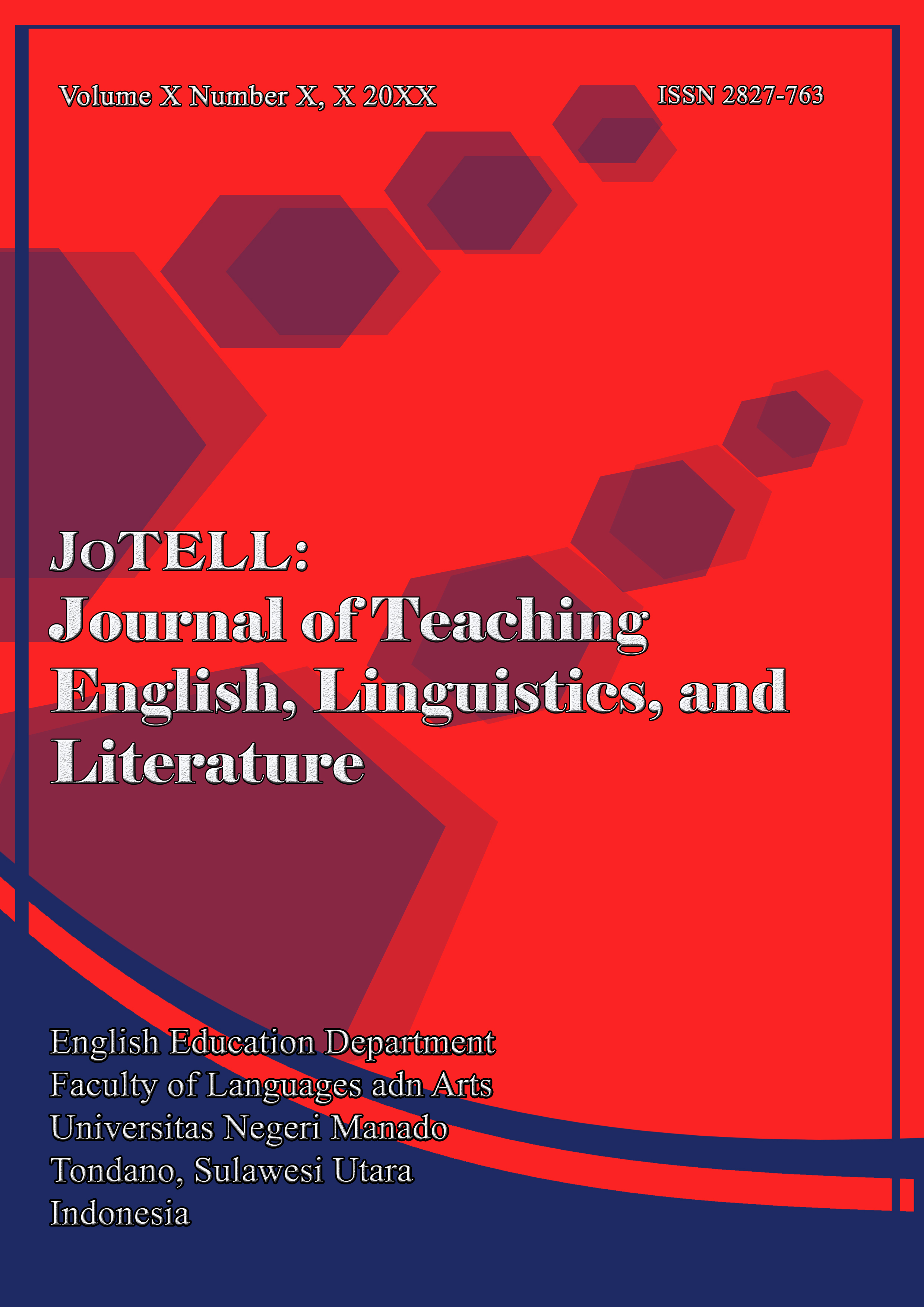Picture-Driven Technique to Enhance English Vocabulary in Grade VIII at SMP Negeri 1 Bolaang
DOI:
https://doi.org/10.36582/jotell.v4i3.12033Abstract
This study aims to determine the effectiveness of the Picture-Driven technique in improving English vocabulary mastery among second grade students of SMP Negeri 1 Bolaang. This research was conducted using quantitative method. This study used a pre- experimental design with a single group for both the pre- and post-tests. The data were analyzed using statistical tests to examine variations in the pre-test and post-test scores the pupils in the second grade of SMP Negeri 1 Bolaang consisting of 25 students were the subjects of this study. There were 20 numbers for each test given the students. The results of this study show If the pre-test's average score is (35.52) The post-test is (62.56) The post-test result is higher than the pre-test. Based on this result, Pictures have an extremely important impact on pupils' vocabulary. The result of a notable rise in scores from the pre-test to the post-test indicate that images not only help in understanding the meaning of words, but also make it easier for students to pronounce them more accurately and confidently. With the stimulus in the form of image-based techniques, students can master the meaning and pronunciation of a word more effectively, so that their ability to spread knowledge increases significantly.
References
Arikunto, S. (2005). Manajemen penelitian. Rineka Cipta.
fivy Andries. (2019). English teaching strategies.
Hatch, E., & Farhady, H. (1982). Research design and statistics for applied linguistics.
Liando, N. V. F., Tatipang, D. P., & Lengkoan, F. (2022). A study of translanguaging
practices in an EFL classroom in Indonesian context: A multilingual concept.
Research and Innovation in Language Learning, 5(2), 167–185.
Liando, N. V. F., Tatipang, D. P., Tamboto, G., Poluan, M., & Manuas, M. (2022).
Pictures as a learning media in teaching vocabulary. Jurnal Ilmiah Universitas
Batanghari Jambi, 22(3), 1944–1949.
Nation, I. S. P. (2013). Learning vocabulary in another language. Learning Vocabulary
in Another Language, 1–624. https://doi.org/10.1016/s0889-4906(02)00014-5
Nurhaliza. (2018). Picture Media and Its Effectiveness in Vocabulary Learning. Journal
of Educational Research, 74(4), 509. https://doi.org/10.2307/328532
Puskur. (2006). Kurikulum tingkat satuan pendidikan. Departemen Pendidikan
Nasional.
Sabanari, V. W., Rombepajung, P., & Kumayas, T. (2022). USING PICTURES TO
IMPROVE STUDENTS’ENGLISH VOCABULARY AT SEVENTH GRADE OF SMP
NEGERI 1 SIAU TIMUR SELATAN. JoTELL: Journal of Teaching English,
Linguistics, and Literature, 1(3), 417–430.
Schmitt, N. (1997). Vocabulary learning strategies. Vocabulary: Description,
Acquisition and Pedagogy, 199227, 4–6.
Schmitt, N. (2000). Vocabulary in language teaching. Cambridge University Press.
School-based curriculum. (2006). Ministry of National Education.
Sudjana, N. (2010). Penilaian hasil proses belajar mengajar.
Ur, P. (1996). A. course in language teaching: practice & theory. (1992). A course in
language testing.
Wright, A. (1989). Pictures for language learning. Cambridge University Press.
Downloads
Published
How to Cite
Issue
Section
License
Copyright (c) 2025 JoTELL : Journal of Teaching English, Linguistics, and Literature

This work is licensed under a Creative Commons Attribution-ShareAlike 4.0 International License.












